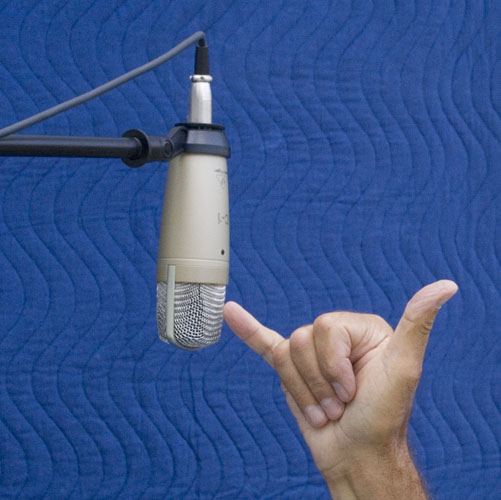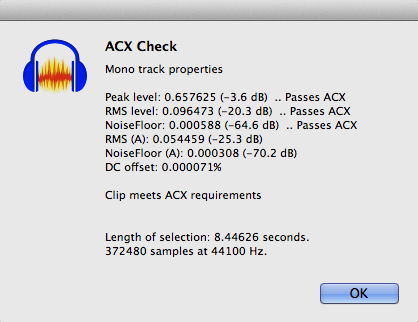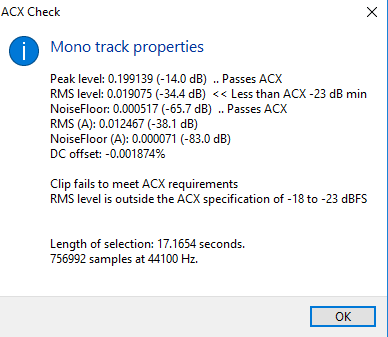Perfect, I have a lot of learning (and desire to) ![]()
No need to fix it by noon, I definitely don’t need that.
It took me quite some time to break it, I’m sure it will take quite some time to fix it ![]()
Thanks again for your assistance with this.
Perfect, I have a lot of learning (and desire to) ![]()
No need to fix it by noon, I definitely don’t need that.
It took me quite some time to break it, I’m sure it will take quite some time to fix it ![]()
Thanks again for your assistance with this.
Describe the system. Which microphone and how is it connected? We know you’re on Windows 10.
Do you use Skype or other chat programs?
Go down the Windows adjustments and setups and make sure these settings are turned off. Do that even if you don’t have those particular problems.
Read through the Windows segment of this document.
https://manual.audacityteam.org/man/faq_recording_troubleshooting.html#enhancements
I still need to take some time and read through those YouTube recommendations.
We published a simple mastering process and when we get everything working, you can try that. A lot of problems are caused by a bare wood floor and bare white walls. In other words, every stylish house in the US. I know professional engineers that will refuse to shoot sound in those houses.
They’re terrible for sound.
Koz
I have a blue snowball microphone.
I do not use skype or other chat programs.
I turned off the fan and took a new recording of the space I am currently in. I have attached the raw recording of this for starters or getting my environment set up the right way so I don’t run into this again.
That has a lot of infrasound, (i.e signals below 20Hz). Infrasound is not audible,
but you need to remove it before applying effects which have threshold settings, like using noise-gates & compressors.
You can remove all the infrasound using a high-pass filter, called a rumble-filter, a/k/a “Low roll off for speech” …

Great, thank you so much, I will do this. . Do you have any recommendations of what other filters I should be using to get this to acx standards? it looks like it meets all the specifications (according to the acx plugin) but the noise floor still looks a bit off. (At least we’re aren’t -200db anymore ![]()
![]() ) progress
) progress ![]()
Also, I have another question. When I’m eliminating my breaths, coughs, etc, is it okay to use the silence icon or will that throw off my noise floor? Also, should I be going through and using that silence button before or after adding in my filters/effects?
There is a rumble filter built into Audiobook Mastering 4. A lot of microphones do this.
This is me catching up.
Koz
You said you normally produce in mono. You should publish forum clips that way, too. That way you can post up to 20 seconds instead of 10 for stereo. Also, you noticed the ACX Check display is simpler in mono. ACX recommends submissions in mono.
And when you do post tests, use a lot of different words. My joke of reading the side of the milk carton or cereal box. If you use the same three words for twenty seconds, we don’t have a variety of different sounds to inspect.
For example: “We noticed at fifteen seconds the word “Pepperidge Farm” has popping P sounds.” That’s from reading a cinnamon bun package.
Quieter Sample is much more natural and probably sounds a lot like you, except I think you’re too close. As Trebor above, you have a lot of rumble and thunder sounds and although the microphone is making some of it, you’re making the rest. You should be about a Hawaiian Shaka away from a bare microphone.

You may notice your volume drops when you do that. That’s correct. You generally can’t hit perfect volume on a home USB microphone—but you can get close.
There’s nothing wrong with a Snowball. I’ve shot sound tracks with one.
Are you using the little stand that comes with it? If you are, then you might consider the book and towel trick to keep it from picking up desk and floor noises.

That will also put the microphone up higher and make it easier to announce and read the text without hunching over.
Please note in this illustration, the whole thing is sitting on a dark blue pad? You can simulate that with two layers of bath towel. That prevents the desk top from messing with the tone of your voice.
Let us know. If you make those changes, post a new test. The 18 second speech also forces you to perform natural pauses and breaths.
http://www.kozco.com/tech/audacity/TestClip/Record_A_Clip.html
Koz
Do you have any recommendations of what other filters I should be using to get this to acx standards?
Yes. We published a simple three-step process for producing an ACX compliant submission. That’s later.
It’s a terrible idea to try and solve production sound problems later in effects and filters for two reasons: It usually sounds terrible and it’s a lot of work you need to perform for every chapter forever.
Thanks. I’ll fix the microphone and the room.
So close. Oooone more sound test…
Koz
The Snowball has switches I need to look up.
Koz
Right. The switch on the back should be #1, Cardioid. That means it doesn’t receive noises and echoes from the back. You should be talking into the blue logo.
Koz
I got your last clip to pass ACX Technical (first three entries and sentence two-thirds down) but the voice quality would never make it.

ACX tests in two steps. The Robot which works about like ACX Check does, but then the submission goes to Human Quality Control. That’s where talking into a milk jug and bad cellphones go to die.
I think you’re just too close to the microphone.
Koz
Theatrical processing is beyond me.
I note nobody ever got bounced (that I know of) for human sounds. Breathing is normal, but they also have a rule against distracting sounds. There was one poster who sounded clinically asthmatic and I’m not sure where to go with that. It was painful to listen to and there’s no filter for it.
Anyway, there are click and pop tools and yes, you can certainly go into each word and correct it. One poster said they were going to do that. I wonder how long that lasted.
You may find as other have that a combination drink of lemon and honey works wonders. I believe them. I have a nasty habit of ticking my tongue before each sentence. I resolved to just stop doing that. It saves a ton of editing time.
There is a fuzzy rule of post production taking five times the length of the show. It’s remarkably accurate, so that’s why we keep gently urging fewer and simpler corrections rather than piling them on.
How long did it take you to read the book? Times five.
Koz
Thank you for all of these recommendations and explanations. I will follow up with making these corrections and posting a new sound bite tonight. Thanks again!
Once we get one to work without any big fuss. I’ll run it through mastering, publish the results and then you get to start with your click and pop suppression—if you feel like it. Once you clear the technical hurdles, it gets a lot fuzzier. ACX doesn’t want any distractions.
ACX wants all your chapters to match, so there is no heavily correcting one chapter and not the next. Once you start a process, you have to continue. As above, they want nothing that can distract from the story. That’s my joke of listening to someone telling you a fascinating story over cups of hot tea.
There is a more global recommendation that the first and last chapters match. This kills the newbies because they start the first book a stumbling, rank amateur and finish a seasoned professional. Now make them match. Many people read the first few chapters over again. You probably won’t have that problem since you’ve already read it once.
And if I didn’t say it before, I think your voice is going to work just fine. It’s our job to get it into an audiobook with the least damage.
This is the write up on Mastering 4. It’s only three tools in bold. Scroll down to — Process. It does use custom tools, so it’s good to read the post from the beginning. The tools depend on each other, they are a suite—a harmonious grouping, so don’t ad lib. If you fail something, post back.
https://forum.audacityteam.org/t/audiobook-mastering-version-4/45908/1
Koz
I’m about a quarter through Sound Speed. So far he’s got all this stuff nailed. I note he’s sitting in a room with about a million dollars of soundproof paneling. I wonder if he addresses that. I know from experience you can get just about any microphone to work in a quiet, echo-free room. He does address that. You can get some lower-end stand-alone recorders to work well in a good room. It’s that recording in a kitchen sound that kills you.
http://kozco.com/tech/audacity/clips/EchoSample.mp3
Is it me or does he sound like a speeded up film? That’s marketable. He should be talking to the Cartoon Network.
Koz
I used the techniques you sent me (towels, books, and the position from the microphone) and here’s what I got ![]()
I have also attached the ACX check for you to review.

That’s more better.
I did cheat a little. I chopped off the last four seconds of room tone (silence). It’s possible to fake out some of the tools if you put too much silence in there.
I applied the three Mastering steps from here. The — Process section gives you the tool settings.
https://forum.audacityteam.org/t/audiobook-mastering-version-4/45908/1
Effect > Equalization. That’s the rumble filter.
Effect > RMS Normalize. That sets RMS or loudness to ACX standards.
Effect > Limiter. That sets high volume peaks to ACX to avoid digital overload damage.
These tools values stick. You only have to enter the settings once.
I ran ACX Check and all three specifications were met. I didn’t need to do anything to the noise. You performed quiet enough to just make it work on its own. And most important, you sound like you (human).


From here you can do additional steps and quality tuning, but you should see if you can duplicate what I did. To be clear, you could submit that just as it is. There’s a good chance it would go through.
Koz
Yes, success! I did follow your instructions and download the plugins. I ran it and it passed!!! Thank you so so so much for your help! I will start recording again now! You have been so helpful I appreciate it so much!
Can I also ask, when you record do you do in and remove any breath sounds that you can hear?
Now it gets soft and mushy. In My Opinion, as long as you’re not medically messed up, natural breathing sounds might be left in. I’m in a minority. Most performers want to apply extensive surgery to the work, getting rid of mouth ticks, pops, breathing, etc. I agree with the mouth ticks, but not the breathing, I know some performers that build breathing into the performance.
There is also a split between voiceover work and audiobooks. Voiceover work (voice of a cartoon or host of a show) needs to be perfect, Audiobooks need to meet ACX Check and then it’s their opinion.
And another item. ACX Check is our tool. Flynwill developed it from several other, existing tools. We have strong evidence it matches the AC Robot, but they have no idea we’re doing this.
I looked up one of the other posters that submitted a test to ACX ahead of the “real” read.
https://forum.audacityteam.org/t/how-to-send-a-test-to-acx/49588/1
You should probably do that before you read the whole book again.
I said there are a couple of obsessive things I would do further. I would apply very gentle Noise Reduction to make the background noise sink even more into the background. Then I might apply a tone shift to make the voice a little less sharp and crisp. That will help suppress mouth ticks in addition to being a little easier on the ears.
Somebody will post you need to apply the De-Esser tool.
But these are all slight improvements and they may not prevent your publishing.
So now it depends on your theatrical goals. I know, right? It’s read the stupid book and go home.
Koz